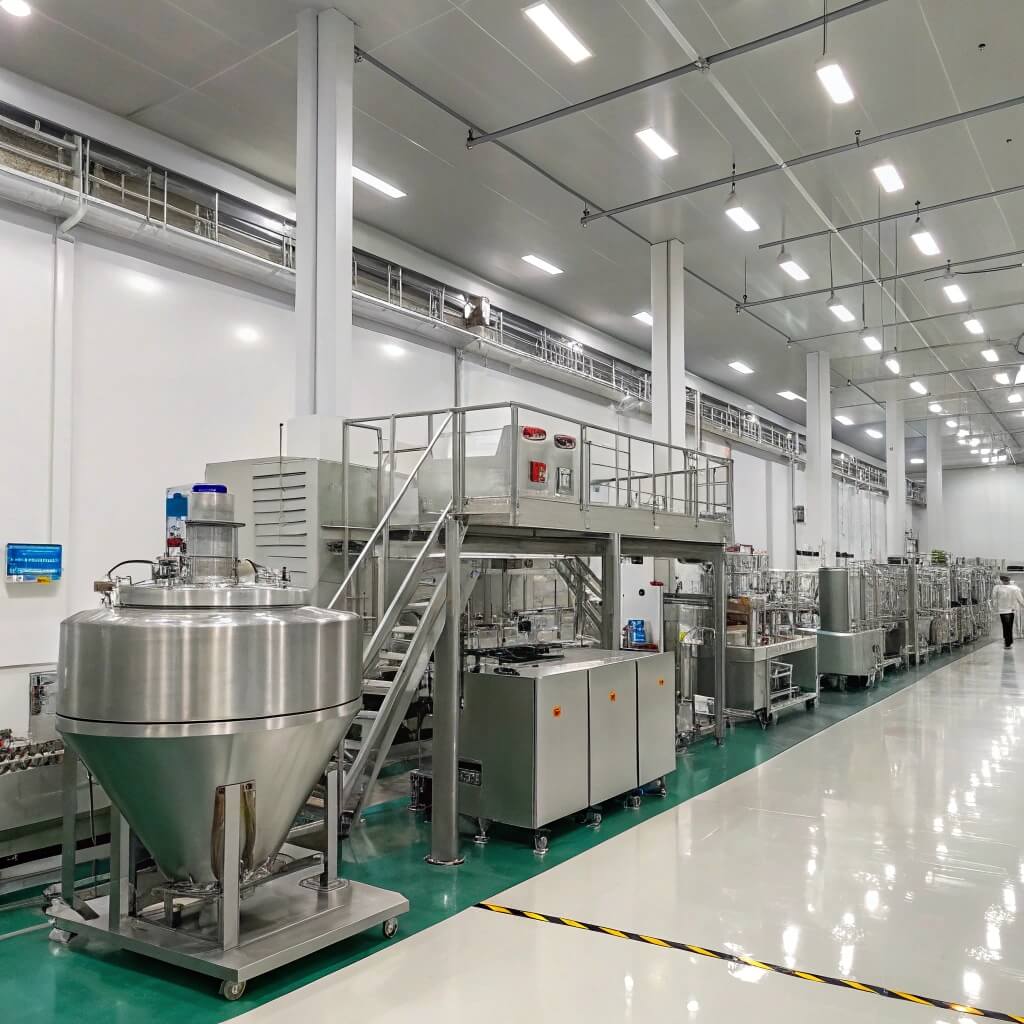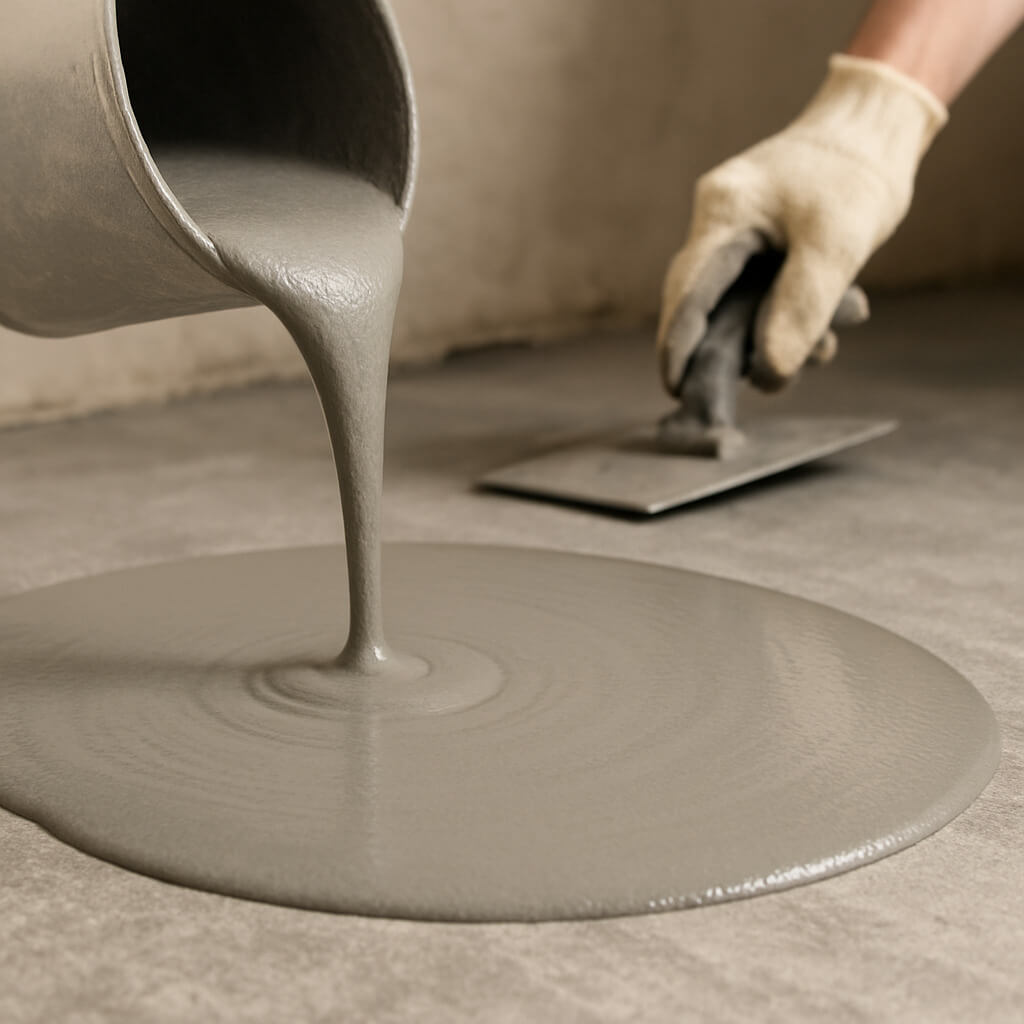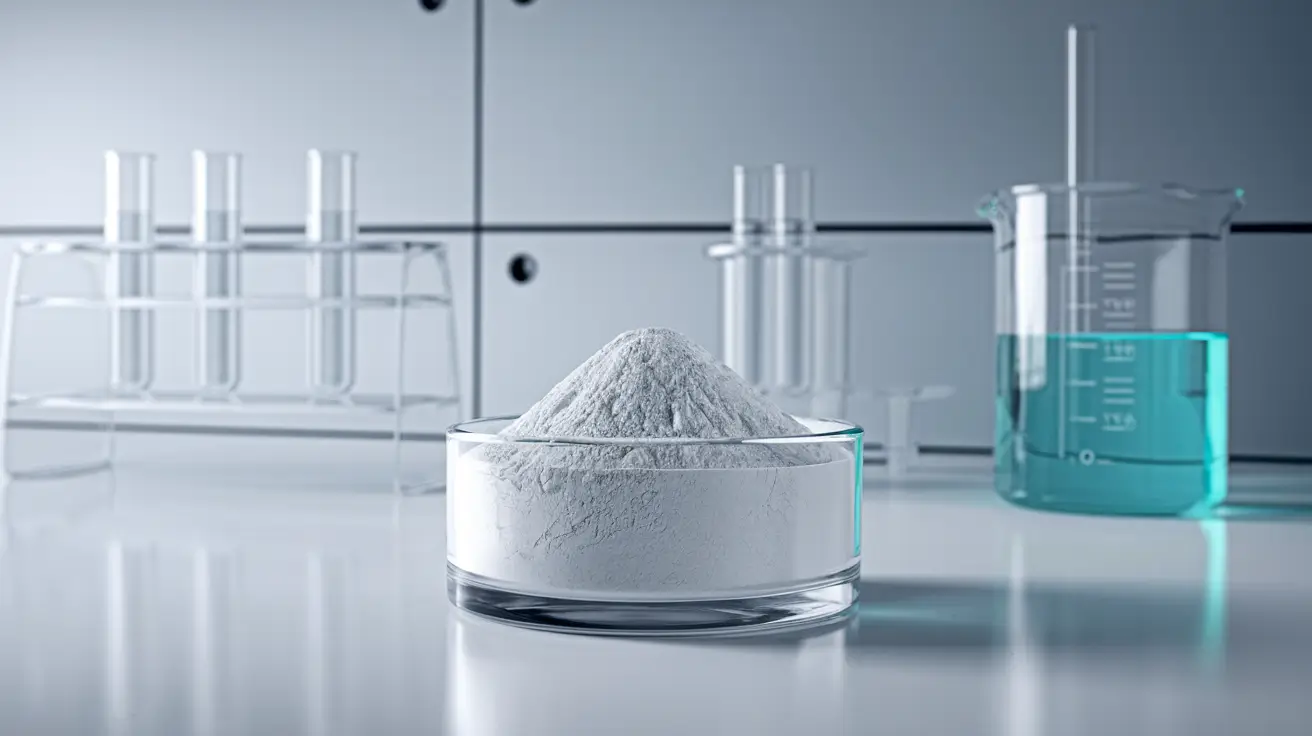When it comes to selecting Hydroxypropyl Methylcellulose (HPMC) for industrial applications, one of the most crucial factors is its viscosity. But here’s the kicker – selecting the right viscosity ensures the functionality, consistency, and effectiveness of the end product. HPMC is widely used in industries like construction, pharmaceuticals, and food production due to its unique properties. This article will help you understand how to determine the appropriate viscosity of HPMC for various applications, how to measure it, and why it’s so important for your business.

1. What is Hydroxypropyl Methylcellulose (HPMC) and Why Does Its Viscosity Matter?
Hydroxypropyl Methylcellulose (HPMC) is a plant-derived polymer widely used in various industries for its versatility as a thickener, emulsifier, binder, and stabilizer. It’s a non-ionic, water-soluble compound that can be used in different formulations, from construction materials to pharmaceutical and food products. But here’s the kicker – the viscosity of HPMC plays a vital role in determining its effectiveness for each application. Higher viscosity HPMC provides thicker, more stable solutions, making it ideal for products that require controlled consistency and performance.
In the construction industry, for example, HPMC is commonly used in mortar, tile adhesives, and plaster to improve workability and extend open time. The viscosity ensures that the materials don’t dry out too quickly, allowing for easier application. In pharmaceuticals, HPMC’s viscosity ensures the uniform release of active ingredients in tablet formulations, while in food, it is used to stabilize emulsions and improve textures.
Choosing the right viscosity grade of HPMC is crucial because it affects how products perform. A viscosity that’s too high can lead to difficulty in mixing and application, while a viscosity that’s too low may result in weak performance or inconsistency. By evaluating the viscosity requirements of your application, you can optimize HPMC performance for your specific needs.
| Industria | Applicazione | Benefit of Viscosity |
|---|---|---|
| Costruzione | Mortars, adhesives, plaster | Workability, open time |
| Prodotti farmaceutici | Tablets, capsules | Consistency, controlled release |
| Cibo | Emulsions, sauces, dressings | Texture, stability |
2. What Determines the Viscosity of HPMC?
The viscosity of HPMC is influenced by several factors, each playing a critical role in determining its suitability for various applications. What’s the real story here? Viscosity depends on HPMC’s chemical structure, the concentration of the solution, and environmental factors such as temperature. Understanding these factors is key to selecting the correct viscosity for your needs.
The chemical structure of HPMC affects how the polymer chains interact with water. The higher the degree of substitution (i.e., the amount of hydroxypropyl or methyl groups attached to the cellulose backbone), the thicker the solution will be. The concentration of HPMC in the solution also affects viscosity; higher concentrations result in thicker solutions. Temperature also has an impact – higher temperatures generally reduce viscosity, while lower temperatures can increase viscosity.
In addition to these factors, different grades of HPMC offer varying viscosities to meet specific industrial requirements. For instance, a grade with a high molecular weight will typically exhibit higher viscosity, making it suitable for applications requiring stability and slow dissolution, like controlled-release pharmaceutical tablets. Understanding how these variables interact can help you fine-tune the viscosity of HPMC to suit your product needs.
| Fattore | Impact on Viscosity | Example Application |
|---|---|---|
| Struttura chimica | Degree of substitution, molecular weight | Prodotti farmaceutici, edilizia |
| Concentrazione | Higher concentration = thicker solution | Cibo, cosmetici |
| Temperatura | Lower temperature = higher viscosity | Construction, food stability |
3. How Do You Measure the Viscosity of HPMC?
Measuring the viscosity of HPMC is crucial for ensuring the right consistency in industrial applications. But here’s the kicker – knowing how to measure viscosity properly means you can precisely control the texture and performance of the product. Viscosity is typically measured using instruments like the Brookfield viscometer O rotational viscometer, which assess how resistant a fluid is to flow.
IL Brookfield viscometer is one of the most commonly used tools to measure viscosity. It works by measuring the torque required to rotate a spindle in a sample of HPMC solution. This provides a direct measurement of the solution’s viscosity. The rotational viscometer works similarly but is more suited for evaluating the flow properties under different shear rates, giving a more detailed analysis of the solution’s behavior.
The process of measuring viscosity involves preparing a solution of HPMC in water and testing it at a specified temperature and concentration. The data obtained from these tests are then compared against known benchmarks for various applications. Once the viscosity is determined, it’s easier to adjust the formulation for optimal performance.
| Viscosity Test | Instrument Used | Key Application |
|---|---|---|
| Test di viscosità | Viscosimetro Brookfield | Prodotti farmaceutici, edilizia |
| Shear Rate Testing | Viscosimetro rotazionale | Food, adhesives, coatings |
| Temperature Testing | Rheometer | R&D, specialized formulations |
4. What is the Ideal Viscosity for HPMC in Construction Applications?
In construction, HPMC is used in products such as mortars, tile adhesives, and plasters. But here’s the kicker – the viscosity of HPMC directly affects the workability and application of these materials. Too high, and it may become difficult to apply; too low, and the product may not perform as required. The ideal viscosity for HPMC in construction applications typically ranges from 50,000 to 150,000 mPa·s.
High viscosity HPMC in construction ensures that the material remains thick enough to stay on the surface during application, preventing slippage. It also improves water retention, which is essential for prolonging the working time before the material begins to set. For example, in tile adhesives, high viscosity helps the adhesive maintain its consistency and ensures better bond strength.
Additionally, the viscosity of HPMC influences the open time of mortars and adhesives. Open time is the period during which a material remains workable after being applied. High viscosity grades offer longer open times, allowing workers to apply and adjust materials over a longer period, which improves the overall quality of the work.
| Viscosity Range (mPa·s) | Applicazione | Beneficio |
|---|---|---|
| 50,000 – 100,000 | Malte, adesivi per piastrelle | Improved workability, water retention |
| 100,000 – 150,000 | Plasters, heavy-duty adhesives | Long open time, enhanced bonding |
5. How Does HPMC Viscosity Impact Pharmaceutical Applications?
In the pharmaceutical industry, the viscosity of HPMC is particularly important for controlling the release rate of active ingredients in tablets and capsules. Ready for the good part? The viscosity affects how the pharmaceutical formulation behaves in the body. High viscosity HPMC is often used for formulazioni a rilascio controllato where a slow, sustained release of the drug is required. This ensures that the active ingredients are released steadily over time, providing long-lasting therapeutic effects.
The viscosity of HPMC is also critical in the tablet coating process. The thicker the HPMC solution, the more uniform the coating will be, ensuring that the tablet is protected and that the drug is released at the desired rate. Conversely, lower viscosity grades may be used for immediate-release tablets, where rapid dissolution is required.
For example, in the case of a sustained-release tablet, HPMC with a viscosity of 100,000 mPa·s or higher might be preferred to slow down the dissolution process. On the other hand, for faster dissolving formulations, a viscosity of 50,000 mPa·s might be more suitable. Adjusting the viscosity allows pharmaceutical manufacturers to fine-tune drug release profiles and improve patient compliance.
| Viscosity Range (mPa·s) | Applicazione | Beneficio |
|---|---|---|
| 50,000 – 100,000 | Immediate-release tablets | Faster dissolution |
| 100,000 – 250,000 | Formulazioni a rilascio controllato | Slow, sustained drug release |
6. What Role Does HPMC Viscosity Play in the Food Industry?
In the food industry, HPMC is widely used as a stabilizer and emulsifier, ensuring that products have the right texture and consistency. But here’s the kicker – viscosity in food applications affects everything from texture to mouthfeel. The ideal viscosity helps to maintain the stability of emulsions, preventing the separation of ingredients over time.
For example, in products like ice cream, HPMC helps provide a smooth, creamy texture by increasing viscosity and preventing ice crystal formation. Similarly, in salad dressings E sauces, the right viscosity ensures that the product has the right thickness for easy pouring and improved mouthfeel.
The viscosity of HPMC also influences shelf life. Higher viscosity ensures that food products remain stable over longer periods, preventing issues like separation and clumping. In applications like sauces and dressings, where a smooth consistency is crucial, choosing the correct viscosity is vital to consumer satisfaction.
| Viscosity Range (mPa·s) | Applicazione | Beneficio |
|---|---|---|
| 10,000 – 50,000 | Salse, condimenti, bevande | Smooth texture, easy pouring |
| 50,000 – 100,000 | Ice cream, cream-based foods | Improved texture, stability |
7. How Can HPMC Viscosity Be Adjusted for Specific Industrial Needs?
Adjusting the viscosity of HPMC is often necessary to meet specific industrial requirements. Ready for the good part? Manufacturers can adjust the viscosity of HPMC by altering its concentration, blending it with other ingredients, or modifying its molecular structure. These adjustments allow HPMC to be tailored for specific applications, ensuring that the end product performs as required.
For example, in construction, you may increase the viscosity of HPMC by using a higher concentration, which helps in improving the bond strength and water retention properties. In pharmaceuticals, adjusting viscosity might involve using different grades of HPMC to control the drug release rate.
Moreover, blending HPMC with other ingredients can also help optimize its viscosity for certain formulations. For example, in food production, blending HPMC with other thickeners or emulsifiers can help achieve the desired consistency while maintaining product stability.
| Method of Adjustment | Impatto | Applicazione |
|---|---|---|
| Altering Concentration | Thicker solutions, better texture | Edilizia, cibo |
| Blending with Other Ingredients | Custom viscosity, stability | Prodotti farmaceutici, alimentari |
| Modifying Molecular Structure | Controlled release, consistency | Pharmaceuticals, cosmetics |
8. What Are the Benefits of Using HPMC with Higher or Lower Viscosity?
Choosing between higher and lower viscosity HPMC depends on the specific needs of your application. But here’s the kicker – both high and low viscosity HPMC have distinct benefits, and understanding when to use each can help you optimize performance.
High viscosity HPMC offers superior stability and texture control, making it ideal for products that require thickness and consistency, such as adhesives and controlled-release pharmaceutical formulations. On the other hand, low viscosity HPMC is easier to handle and is preferred in applications that require faster dissolution, such as in certain food products or pharmaceuticals.
The real value? Higher viscosity HPMC improves the durability and workability of products, while lower viscosity HPMC can reduce production costs and improve processing efficiency.
| Viscosity Type | Beneficio | Applicazioni |
|---|---|---|
| Alta viscosità | Improved stability, texture control | Prodotti farmaceutici, edilizia |
| Bassa viscosità | Faster dissolution, easier handling | Food, quick-drying adhesives |
9. What Are the Risks of Using the Wrong Viscosity of HPMC?
Using the wrong viscosity of HPMC can lead to several issues, potentially affecting product performance and quality. Ready for the good part? If the viscosity is too low, the product may not provide adequate stability or adhesion. Conversely, if the viscosity is too high, it could make the product difficult to apply or use.
For example, in construction, using HPMC with too low viscosity could lead to poor bond strength and a mixture that is too runny to apply effectively. In pharmaceuticals, using the wrong viscosity could result in inconsistent drug release rates, affecting therapeutic efficacy.
The real story? Understanding the viscosity requirements for your specific application helps ensure that HPMC performs as expected, contributing to the overall success of your product.
| Risk | Impatto | Example Application |
|---|---|---|
| Bassa viscosità | Poor performance, weak adhesion | Edilizia, adesivi |
| Alta viscosità | Difficult to apply, inconsistent use | Prodotti farmaceutici, alimentari |
10. How Do HPMC Suppliers Ensure Consistent Viscosity Quality?
Ensuring consistent viscosity quality is a top priority for HPMC suppliers. But here’s where it gets interesting – reputable suppliers implement strict quality control measures to ensure that every batch of HPMC meets the required viscosity specifications. These measures include continuous monitoring and testing of viscosity, ensuring consistency from batch to batch.
Suppliers also adhere to industry standards and certifications, such as ISO 9001 and Good Manufacturing Practices (GMP), to guarantee the highest quality product. By working with certified suppliers, you can ensure that the HPMC you receive meets the necessary viscosity standards for your application.
| Supplier Action | Misura di controllo della qualità | Beneficio |
|---|---|---|
| Continuous Monitoring | Viscosity testing throughout production | Consistency, reliability |
| Adhering to Industry Standards | ISO, GMP certifications | Guaranteed product quality |
| Batch Testing | Regular viscosity checks per batch | Ensures product meets application needs |
Conclusione
In conclusion, selecting the right viscosity for HPMC is essential for ensuring product quality and performance across various industrial applications. By understanding the factors that influence viscosity, the methods used to measure it, and the specific viscosity needs for construction, pharmaceuticals, and food industries, you can make more informed decisions that optimize your formulations. Adjusting the viscosity of HPMC to suit your specific requirements allows for more efficient production processes and higher-quality end products, ensuring that your business stays competitive and meets industry standards.
Sezione FAQ
Domanda 1: Che cosa è l'HPMC?
Risposta 1: HPMC, or Hydroxypropyl Methylcellulose, is a cellulose derivative used in various industries like construction, pharmaceuticals, and food. It functions as a binder, thickener, stabilizer, and emulsifier in formulations.
D2: How do you measure the viscosity of HPMC?
A2: Viscosity of HPMC is commonly measured using viscometers like Brookfield or rotational viscometers. These tools help determine the flow resistance of HPMC solutions, ensuring they meet application standards.
D3: What is the ideal viscosity for HPMC in construction?
A3: The ideal viscosity of HPMC for construction materials like mortars and tile adhesives typically ranges from 50,000 to 150,000 mPa·s, depending on the application. Higher viscosity ensures better workability and performance.
D4: How does HPMC viscosity affect pharmaceutical products?
A4: In pharmaceuticals, viscosity plays a crucial role in controlling the release rate of active ingredients in tablets and capsules. The ideal viscosity ensures uniform distribution and steady release of the drug.
D5: Can HPMC viscosity be adjusted for different applications?
A5: Yes, HPMC viscosity can be adjusted by modifying the concentration or blending it with other ingredients. This flexibility allows manufacturers to customize HPMC for various industrial applications, ensuring optimal performance.




